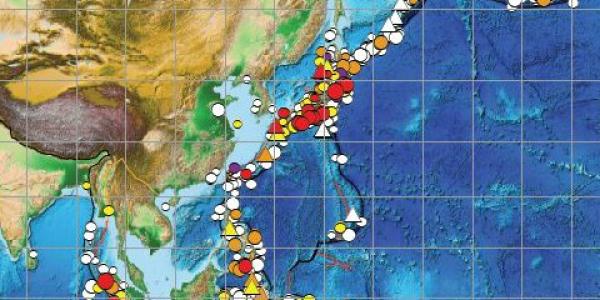Concise videos share NCEI's expertise with educators

NCEI is a leading contributor to the advancement of climate science, and a critical part of that mission is creating approachable explanations of the complexities of weather, climate, and human-driven climate change.
To support educators in effectively building an understanding of the basics of climate literacy, NCEI has created successive videos that support science curriculum standards with expertly vetted, accurate science descriptions. These videos, available with subtitles, were created in both English and Spanish to promote access to climate science building blocks.
Climate versus Weather
The terms “climate” and “weather” are thrown around often, but understanding their nuanced differences is imperative for understanding the larger issues. By grasping how time and space define weather and climate, viewers develop their understanding of the 4th Principle of The Essentials Principles of Climate Literacy. Specifically, the video explores how:
- Climate is determined by the long-term pattern of temperature and precipitation averages and extremes at a location.
- Climate is not the same thing as weather. Weather is the minute-by-minute variable condition of the atmosphere on a local scale. Climate is a conceptual description of an area's average weather conditions and the extent to which those conditions vary over long time intervals.
Exploring these topics in the classroom also supports the Next Generation Science Standards’ Disciplinary Core Ideas 3-ESS2.D: Weather and Climate and MS-ESS2.D: Weather and Climate developed by U.S. states and science educators.
This video is suitable for 3rd through 8th grade students and is helpful for all ages.
Real Data in Action
Hundreds of scientists collaborated to create the Bulletin of the American Meteorological Society’s State of the Climate in 2019, and the second video gives a concise overview of the major findings of these experts. The 5th Principle of The Essentials Principles of Climate Literacy is demonstrated in this video by showing how observations and modeling can inform our understanding of climate change over time. Specifically, this video explores how:
- The components and processes of Earth's climate system are subject to the same physical laws as the rest of the Universe. Therefore, the behavior of the climate system can be understood and predicted through careful, systematic study.
- Environmental observations are the foundation for understanding the climate system. From the bottom of the ocean to the surface of the Sun, instruments on weather stations, buoys, satellites, and other platforms collect climate data.
Exploring these topics in the classroom also supports the Next Generation Science Standards’ Disciplinary Core Ideas HS-ESS3.D: Global Climate Change and MS-ESS3.D: Global Climate Change.
This video is suitable for 8th through 12th grade students and is helpful for all ages.
How We Know
Explaining how it is known that the global climate is changing is a topic that could be explored at great length, but this short video shares the major factors that inform our certainty of a changing climate. This third video supports the 6th Principle of The Essentials Principles of Climate Literacy by summarizing how humans are involved in climate change and where the impacts can be seen. Specifically, this video explains how:
- The overwhelming consensus of scientific studies on climate indicates that most of the observed increase in global average temperatures since the latter part of the 20th century is very likely due to human activities, primarily from increases in greenhouse gas concentrations resulting from the burning of fossil fuels.
- Growing evidence shows that changes in many physical and biological systems are linked to human-caused global warming.
Exploring these topics in the classroom also supports the Next Generation Science Standards’ Disciplinary Core Ideas HS-ESS3.D: Global Climate Change and MS-ESS3.D: Global Climate Change.
This video is suitable for 6th through 12th grade students and is helpful for all ages.
To learn more about how to structure a climate-focused curriculum, review The Essential Principles of Climate Literacy available from NOAA’s Climate.gov in both English and Spanish. Development of the guide came from NOAA and the American Association for the Advancement of Science (AAAS).



